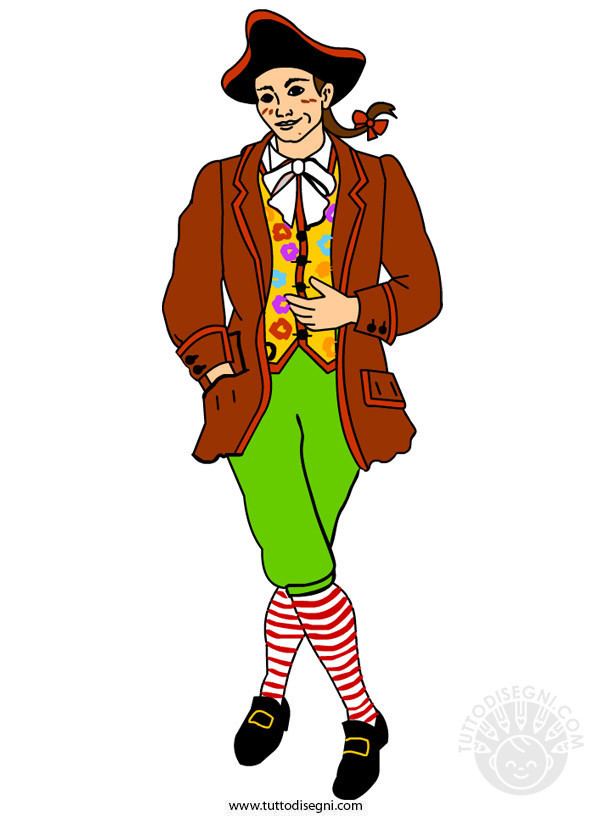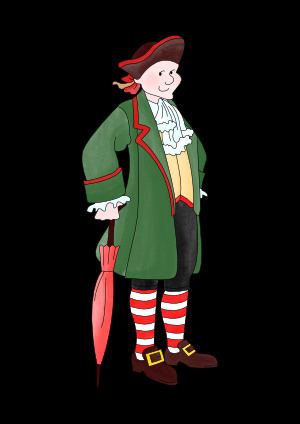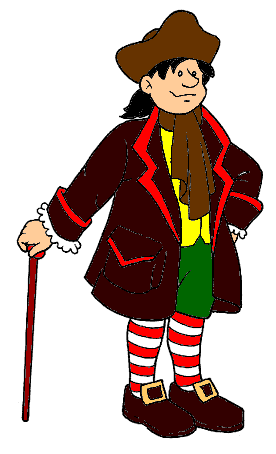 | ||
Similar Brighella, Il Dottore, Pantalone, Pulcinella, Tartaglia | ||
Meneghino (Milanese: Meneghin) is a traditional character of the Italian commedia dell'arte, associated to the city of Milan. As such, it also plays a major role in the Milanese celebrations of Carnival (Carnevale Ambrosiano) and in local marionette traditional shows.

It is uncertain whether "Meneghino" is just a diminutive form of "Domenico" or whether the name is a reference to domenighini, a word used in Milan to refer to the servants that accompanied the faithful to masses on Sundays (domenica in Italian). Meneghino is in fact a witty servant (and thus a variation on the theme of the Zanni character), but he is mostly characterized by honesty, sincerity and a strong sense of justice. He is usually represented as wearing a cocked three-cornered hat, a pony-tailed wig, short green pants, red-white striped stockings, black shoes with buckles, a white shirt, a yellow or otherwise colorful flowered vest, a long jacket, and an umbrella. Meneghino's sincerity is also symbolized by the fact that, unlike most commedia dell'arte characters, he doesn't wear a mask. While originally a servant, Meneghino has actually taken on different roles on stage, including that of the master, the peasant, and the merchant. In Carnival parades, he is often accompanied by his wife "Cecca" (Milanese diminutive of "Francesca").
The character was first popularized (and possibly created) by Milanese writer Carlo Maria Maggi, who also gave him the surname "Pecenna", a Milanese word which means "hairdresser" but also conveys an implicit critique to the vanity and shallowness of aristocracy and clergy. The character was further developed by Milanese poet Carlo Porta, who used it in several works, including his debut El lavapiatt del Meneghin ch'è mort ("The dead Meneghino's dish-washer", 1792). Porta also developed the anti-clerical traits of the character in works such as Meneghin biroeu di ex monegh ("Meneghino Servant of the Former Nuns", 1820). Meneghino thus eventually became the embodiement of the Milanese's critical attitude towards the powerful, the rich, and the oppressors of the people. As a consequence, in the years that led to the Italian unification (i.e., during the "Risorgimento"), he became a symbol of the Milanese revolutionary movement against the Austrian oppression.

In modern Milanese culture

Nowadays, Meneghino is the prominent commedia character and carnival mask representing Milan, having gradually replaced an older character Beltrame, more akin to Brighella. The word "meneghino" has become a common antonomasia to refer to Milanese people and matters, as well as the Milanese language itself. Recently, a new model of trains called "Meneghini" have been introduced in the Milan Metro subway system.


